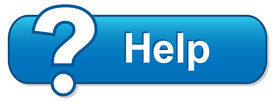Editor Introduction
Overview
The single plain page editor is like an online version of common word processor programs (such as MS Word, OO Writer etc) but with features specific to editing your website
A single plain page consists of a white canvas where you can put whatever you like. You can also copy and paste into this area. Above the white canvas is are two toolbars, which contains all the tools for manipulating text and adding pictures, tables, links and other special features.
Saving your changes
The most important button on the toolbars is the Save Changes button, which you need to remember to click regularly. On the web, we do not provide 'auto saves', nor reminders that you have not saved. Sometimes you get logged out or lose your connection, so you need to remember to click that save button every few minutes. Remember to wait a few seconds until you see the dialogue box marking the completion of the save. Note there are save buttons at the top left of the toolbar and bottom left of the CMS window, these buttons can be used interchangeably.
Textformatting options
The toolbars contains the general text formatting options. You will note easily recognisable buttons for Bold, Italics, Underline, Strike through, Left justify etc as well as a third part spell checker function. Even more formatting option are available from the Style/Size Menu and the Insert Menu. These menus contain all of the options that the buttons do and alot more.
Explore these menus and become familiar with all of the available options. To use the style button, highlight the text you want to change the style of, then select the style from the style dropdown menu. If you don't select your text first, the next text you type will have the new style you selected, or for some styles, that style will be applied to the current paragraph (eg with text alignment)
The Style/Size Menu is good for creating headings. We encourage you to use only the 5 heading options. Start from the largest, using the next level down for your subheadings. Don't worry if they are too big, the colour, font, size etc can be changed globally over your entire website. Its important that you just concentrate on "marking" words on your page that you want to be headings of differing importance. The actual look and feel should be taken from a global site style perspective. If you accidentally change the wrong text to a heading, you can change it back using Plain Text.
Colouring your text
A colours icon will enable you to change the colour of text. Don't overuse it. Try to only use it to highlight small segments of text. If you want to change the colour of all text or all headings, then you can do this in the colours management area of your global design settings.
Inserting content
Inserting photos
The Insert... Photos option can be used for uploading and inserting photos into your page. Note it can be difficult to align photos and move photos around your page, so you need to consider how you will do this. Typically the best approach is to use the "Align Right" option when inserting your images. This will make the text wrap around your image nicely and is much more presentable.
Inserting links to internal pages, other websites, bookmarking
The Insert... Link option can be used for inserting a link, or uploading a file like a PDF etc, to be linked from this page. The links menu can also be used to make in page bookmarks that allow you to link from one part of a page to another, eg when you have all your FAQ on one page, or Back to Top links. There is more information on this further in this FAQ section.
Inserting Fields
The Insert... Fields option is for inserting form fields into an enquiry or questionaire. These will do nothing in a ordinary page, apart from appearing visually. They also won't do anything in an enquiry form unless you add a submit button.
Special Characters
There is a small dropdown menu for special characters. On many keyboards it is hard to find some special characters you often need on your website like euros and copyright symbols. Just select the character you want to use in your webpage.
Using tables to format content, Calendars
To format your page you can also Insert... Tables and Columns. People often like to have their content separated into 2 columns. Either both the same size, or one column larger than the other. The columns menu also has some options for creating Tables, eg to represent information in a tabular format. You can also generate Calendars here. Use the "more" option for maximum control over your table. The only difference between columns and tables is that columns insinuate only 1 row.
Additional functions
HTML Mode
Above right of the toolbar is an HTML tab, clicking this will will put you in HTML mode and should only be used by web designers, or those who are technically minded. Just click the Design tab to return to the Design mode.
Backups
The Backups button bottom right is good if you want to fetch older versions of this page if you have made a major mistake. Please note however, that it only contains your last save of each day. If you have been making changes all day, it will only contain the version prior to your last save, and the versions from days prior. It's a great way to restore back to yesterday when you need to, but not a complete undo facility.
You can also use common keyboard shortcuts when you are editing your pages.
Further reading
- Video-Tutorials.html (Size: 34.57 KB) Download
